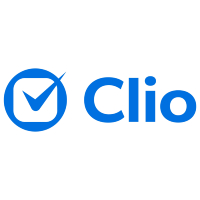 By Legal Futures Associate Clio
By Legal Futures Associate Clio
Implementing the right technology can be a gamechanger for how legal firms work—but with so many technology solutions on offer, all promising big benefits, how do you decide what the “right” option is for your firm?
At Clio, we’ve narrowed this down to a three-step process, which you can use to assess any new tech solution your firm is considering. Here’s how to approach this process:
Focus on challenges and pain points first
Start by defining the existing pain points that negatively impact how you operate. Doing so will enable you to better assess if a tech solution will alleviate those issues.
Some of the challenges for your firm may include:
- Optimising how you work remotely or using a hybrid model
- Better serving your clients, right from the point of intake
- Privacy, compliance, and data security issues
While there are many tech options available to law firms, it’s important to remember that your firm or your clients may not benefit from adopting every new technology that you come across. Focus on the quality of benefits (tangible and intangible) and how they fit your firm’s unique needs to decide on the right fit for you.
Conduct a SWOT analysis
Using the SWOT (strengths, weaknesses, opportunities, and threats) method when reviewing potential tech solutions can be incredibly helpful. Some questions to consider include:
- How much money and time will this software save? (Strength)
- How difficult and time-consuming will it be to implement the new technology? (Weakness)
- How much potential increase in profits and/or revenue will the new software generate? (Opportunity)
- What risks are involved if we adopt the new software? (Threat)
Once you have conducted a SWOT analysis, use it to ask questions of your potential legal software provider. Make sure they can answer each question to your satisfaction and that they can back up what they promise in writing. Go a step further and do your own research and due diligence by trialling the system (Clio offers a 7-day free trial of our legal practice management software; you can sign up here). Finally, learn how this software works for others in your field. That can include asking existing customers about their experiences or checking out a review site, such as Capterra.
Make a tech adoption plan
Once you’ve chosen your new software, it helps to map out a comprehensive transition and implementation plan.
Your plan should present answers to questions staff may have about how you will implement the new solution, such as:
- What will the transition/migration period look like?
- Have you shown firm staff the value of the software?
- Have you communicated who will be responsible for what?
These three steps could lead you to a software solution that could revolutionise how your firm works.
An expanded version of this article, which includes key questions to ask of your potential provider and tips to make implementing your new software easier, is available here.
Or, if you would like to find out how Clio’s practice management software stacks up for law firms, you can sign up for a 7-day free trial here.










